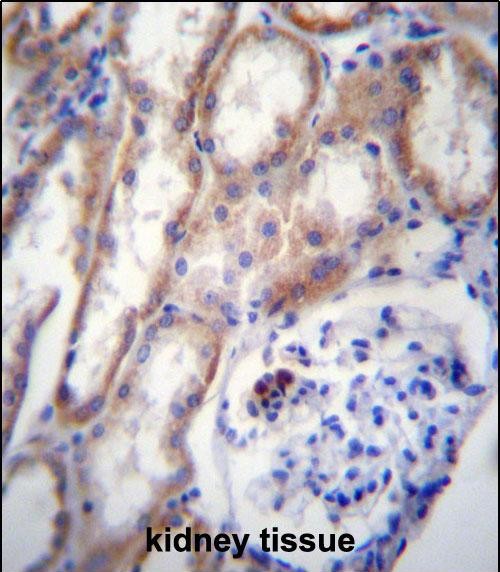

| WB | 1/1000 | Human,Mouse,Rat |
| IF | 咨询技术 | Human,Mouse,Rat |
| IHC | 1/100-1/500 | Human,Mouse,Rat |
| ICC | 技术咨询 | Human,Mouse,Rat |
| FCM | 咨询技术 | Human,Mouse,Rat |
| Elisa | 咨询技术 | Human,Mouse,Rat |
| Aliases | Zona pellucida sperm-binding protein 4, Zona pellucida glycoprotein 4, Zp-4, Zona pellucida protein B, Processed zona pellucida sperm-binding protein 4, ZP4, ZPB |
| Entrez GeneID | 57829 |
| WB Predicted band size | 59.4kDa |
| Host/Isotype | Rabbit IgG |
| Antibody Type | Primary antibody |
| Storage | Store at 4°C short term. Aliquot and store at -20°C long term. Avoid freeze/thaw cycles. |
| Species Reactivity | Human |
| Immunogen | This ZP4 antibody is generated from rabbits immunized with a KLH conjugated synthetic peptide between 445-474 amino acids from the C-terminal region of human ZP4. |
| Formulation | Purified antibody in PBS with 0.05% sodium azide. |
+ +
The zona pellucida 4 (ZP4) antibody targets ZP4. a glycoprotein component of the zona pellucida, an extracellular matrix surrounding mammalian oocytes and early embryos. The zona pellucida, composed primarily of ZP1–ZP4 in humans, plays critical roles in oocyte development, sperm-egg interaction, and fertilization. ZP4. encoded by the ZP4 gene, contributes to the structural integrity of the zona matrix and participates in species-specific sperm binding. Antibodies against ZP4 have garnered interest in reproductive biology and clinical research due to their potential implications in fertility and contraception.
Infertility studies suggest that autoantibodies targeting ZP proteins, including ZP4. may disrupt sperm-oocyte interactions, leading to implantation failure or reduced fertilization rates. Conversely, ZP4 antibodies are explored as candidates for contraceptive vaccines, leveraging their ability to block sperm adhesion. Research also investigates ZP4 expression patterns in ovarian follicles, with antibodies serving as tools to study ZP dynamics during folliculogenesis or pathological conditions like premature ovarian insufficiency. However, ethical and technical challenges persist, including avoiding cross-reactivity with other ZP proteins and minimizing immune-mediated ovarian dysfunction. Current applications extend to diagnostic assays for infertility screening and quality assessment of oocytes in assisted reproductive technologies. Further studies aim to clarify ZP4's immunogenicity and refine antibody-based strategies for both fertility preservation and contraception.
×